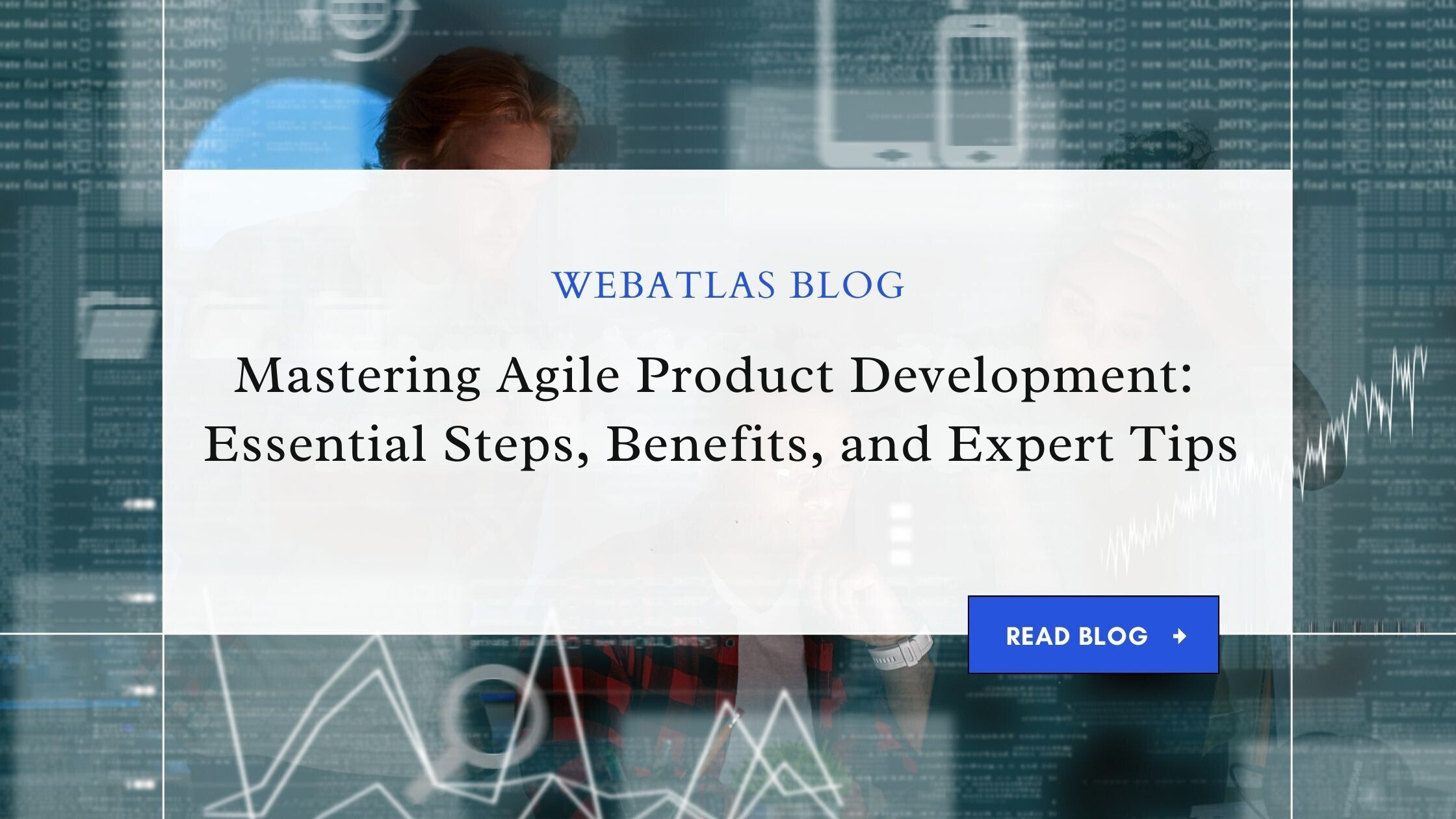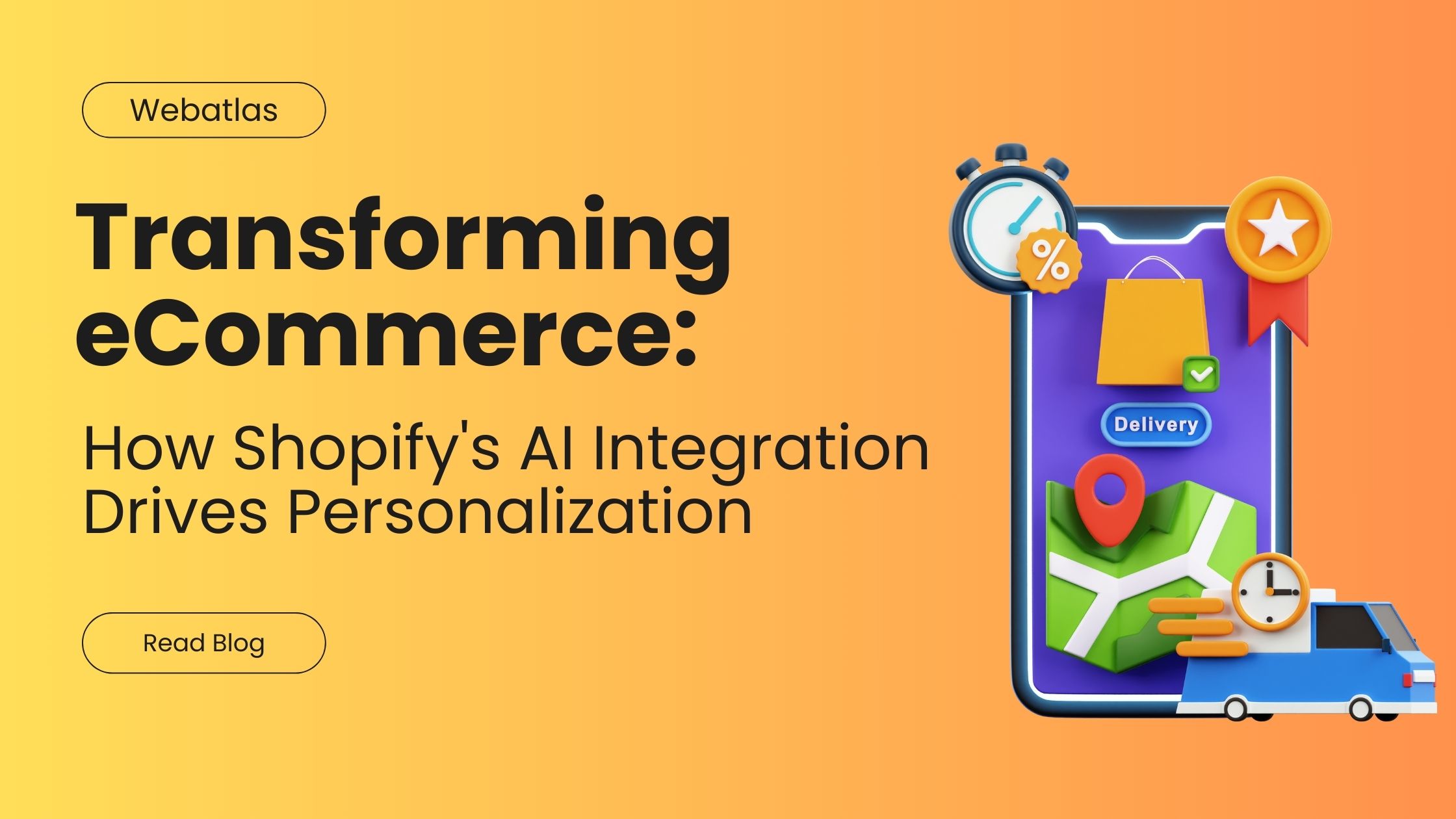The Complete Guide to Agile Product Development: Steps, Benefits, and Best Practices

In today’s fast-paced world, businesses need to adopt more flexible and adaptive strategies to meet market demands. Agile product development has emerged as one of the most effective methods for product creation, particularly in industries like software, mobile app development, and technology. Agile allows product development teams to be highly collaborative, continuously improving, and swiftly responsive to customer feedback.
This guide will walk you through the key steps of agile product development, the benefits of implementing it, best practices for success, and how leading product development companies like Webatlas leverage agile principles to create top-notch digital solutions.
1. What is Agile Product Development?
Agile product development is an iterative, flexible approach that emphasizes collaboration, customer feedback, and continuous improvement. Originally created for software development, Agile principles have expanded to cover broader product development processes, including mobile app development, hardware design, and more.
The Agile methodology is based on the Agile Manifesto, which prioritizes:
- Individuals and interactions over processes and tools.
- Working software over comprehensive documentation.
- Customer collaboration over contract negotiation.
- Responding to change over following a plan.
In product development, Agile focuses on delivering functional prototypes (or “increments”) in shorter cycles, allowing for feedback and course correction. This system breaks down large, complex projects into manageable sprints or iterations, each lasting typically 2 to 4 weeks.
Also Read- Web3 Gaming Explained: A Complete Guide to the Future of Blockchain Gaming
2. Key Steps in Agile Product Development
Agile product development follows several defined steps that ensure efficient execution and timely delivery of a product. Here are the essential steps:
A. Product Backlog Creation
The product backlog is a prioritized list of features, functionalities, and bug fixes required for the final product. The product owner, in collaboration with stakeholders, creates this backlog. Items at the top are the most critical and ready for the next sprint.
The backlog evolves throughout the project, adapting to customer feedback and changes in market needs.
B. Sprint Planning
During sprint planning, the development team decides which items from the product backlog can be tackled within the sprint period. Clear goals are set, and the team creates a sprint backlog, a detailed to-do list for the sprint.
C. Daily Standups
Standup meetings, or daily scrums, help ensure everyone on the development team is aligned. These brief, focused meetings allow each team member to share progress, discuss roadblocks, and identify opportunities for cross-functional collaboration.
D. Sprint Execution
The actual development work happens during the sprint execution phase. The team focuses on coding, designing, and testing features according to the sprint backlog. During this phase, ongoing collaboration and adjustments are encouraged, keeping the process adaptive and flexible.
E. Sprint Review and Retrospective
At the end of each sprint, the team reviews the work done in a sprint review session. Feedback is collected, and the next steps are discussed. Afterward, a sprint retrospective allows the team to reflect on the process itself and suggest improvements for the upcoming sprints.
F. Product Release
Once a set of increments is polished and ready, it is released to customers or stakeholders. Continuous delivery in Agile allows for earlier releases, ensuring users can engage with the product and provide feedback at every stage.
3. Benefits of Agile Product Development
A. Increased Flexibility
Unlike traditional development methods, Agile allows teams to pivot based on customer feedback, market changes, and technology advancements. This flexibility reduces the risk of creating a product that is no longer relevant by the time it launches.
B. Faster Time to Market
By breaking the project into smaller, manageable sprints, Agile accelerates the time it takes to deliver a working product. In industries like mobile app development, where speed is essential, this quicker time to market offers a significant competitive advantage.
C. Enhanced Collaboration
Agile promotes cross-functional teamwork, engaging developers, designers, testers, and business stakeholders throughout the product development cycle. This high level of collaboration leads to better decision-making, faster problem-solving, and improved product quality.
D. Customer-Centric Approach
One of the standout features of Agile is its emphasis on customer feedback. By continuously engaging users and incorporating their feedback into the product, development teams ensure they are building solutions that meet actual market demands.
E. Reduced Risks
The iterative nature of Agile product development mitigates risk. Since features are built, tested, and deployed in small increments, potential issues can be identified and addressed early, preventing larger problems from arising at the end of a project.
4. Best Practices for Agile Product Development Success
To maximize the effectiveness of Agile product development, it’s essential to implement the following best practices:
A. Start with a Clear Vision
Before beginning any sprint, ensure the entire team understands the product vision. The product owner should communicate this vision clearly, so everyone is aligned on the goals and objectives from the outset.
B. Prioritize the Backlog Effectively
Not all product features are equally important. Product owners need to prioritize the backlog, focusing on the most impactful features first. This ensures the team is always working on the highest-value items.
C. Foster a Culture of Continuous Improvement
Agile thrives in environments that embrace change. By holding regular retrospectives, teams can learn from each sprint and apply those insights to future iterations. Encourage team members to be open about challenges and suggest ways to improve.
D. Use Automation and Continuous Integration
To speed up delivery and reduce errors, use automation tools for tasks like testing, integration, and deployment. Continuous integration practices ensure that code changes are integrated into the product more frequently, minimizing integration issues.
E. Maintain Transparent Communication
Clear communication is key to Agile success. Daily standups, sprint reviews, and retrospectives provide opportunities for team members to share updates and align on goals. Additionally, keeping stakeholders informed about the progress will reduce surprises and ensure smoother execution.
5. Agile in Action: Webatlas’ Expertise in Product Development
When it comes to leveraging Agile for product development, Webatlas stands out as an industry leader. As a product development company with a deep understanding of mobile app development and software solutions, Webatlas utilizes Agile methodologies to deliver high-quality, user-focused products.
By adopting Agile, Webatlas ensures:
- Rapid delivery of functional prototypes that clients can interact with.
- Continuous engagement with stakeholders to capture feedback at each stage of development.
- Enhanced collaboration among cross-functional teams, including designers, developers, and testers, ensuring each aspect of the product is refined and aligned with user needs.
Through their deep expertise, Webatlas excels in helping businesses transform their ideas into fully functional, market-ready products. Their focus on flexibility, customer collaboration, and continuous improvement makes them a preferred partner for companies looking to create innovative digital solutions.
Conclusion
Agile product development is a transformative approach that enables companies to stay competitive in today’s fast-changing markets. By following its structured steps, reaping its numerous benefits, and adhering to best practices, businesses can ensure that their product development process is efficient, customer-focused, and adaptive to change. Leading companies like Webatlas are setting the standard by utilizing Agile to deliver exceptional products, especially in mobile app development and broader digital solutions. Embrace Agile, and watch your product ideas come to life with unprecedented speed and precision.
Recent Post
Let's talk about your project, or just come and say hello!
Webatlas Technologies is the fastest growing web and mobile app development company



